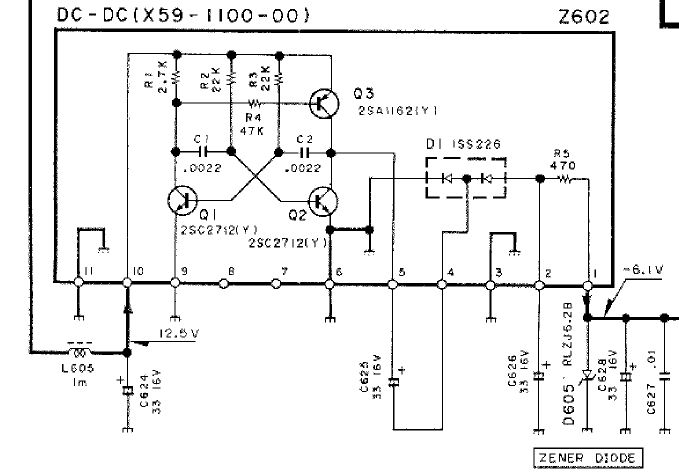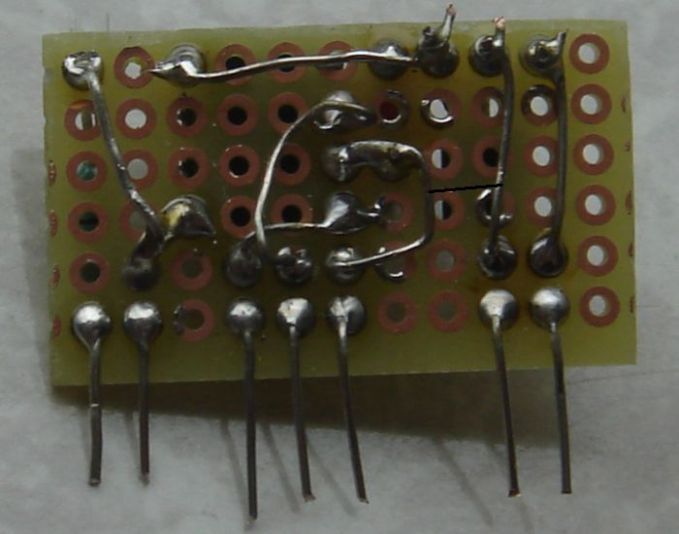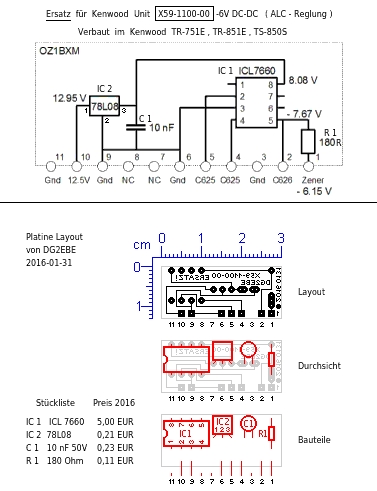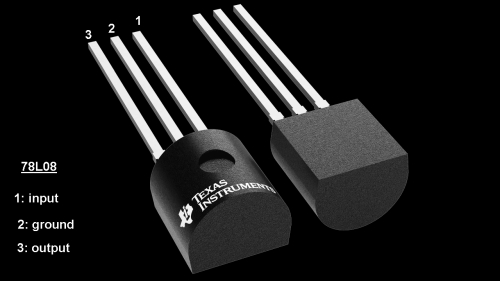|
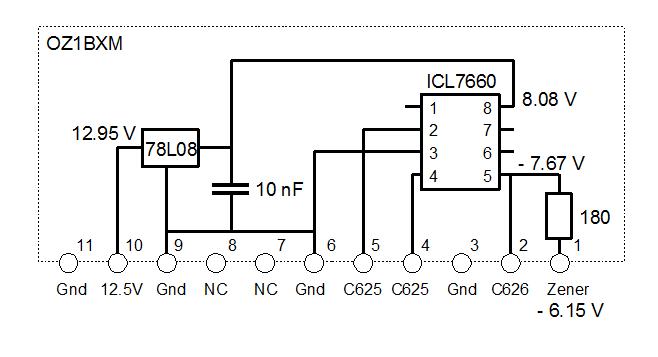
Circuit diagram of the replacement DC-DC board.
|
Replacement circuit
ICL7660 is a voltage inverter. Two capacitors (C625
and C626, each 10 uF) are needed for creating a negative
voltage output. The negative output will be at the same voltage level
as the positive supply voltage. This means, that +8V supply
voltage at pin 8 will create -8V output voltage at pin 5. The 180
ohm resistor limits the current through the zener diode. The
current is about 8 mA. The ICL7660 version I used was ICL7660CPAZ
from Intersil. This components is not critical at all, and versions
from other vendors will do fine. The ICL7660A will do fine, too. The input voltage to the DC-DC board
(12.5 V at pin 10) is stabilized by a 78L08 voltage
regulator. The output from 78L08 is 8 V, which is the supply
voltage of ICL7660. Credit to Yamada Radio Clinic, who inspired me to create this circuit. |
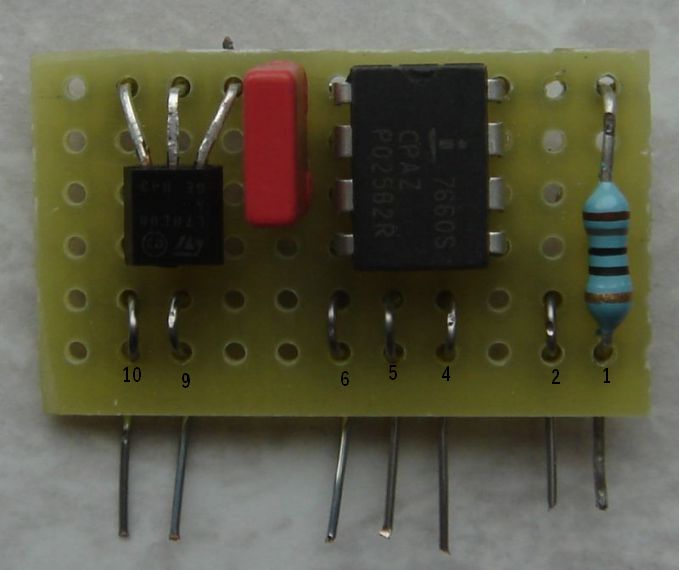
Replacement board, front side.
|
Replacement board, front side
The replacement board is populated by 4 components. They are
soldered on the rear side and wired together. This construction
method is easy for small circuits. The 7 pins at the
bottom are solid wires. The pins will eventually be
soldered to the RF board and they must be able to withstand heat from
the soldering iron. That is why I have added a "half loop" on each of
them. Each pin is soldered to the board in two places.
|
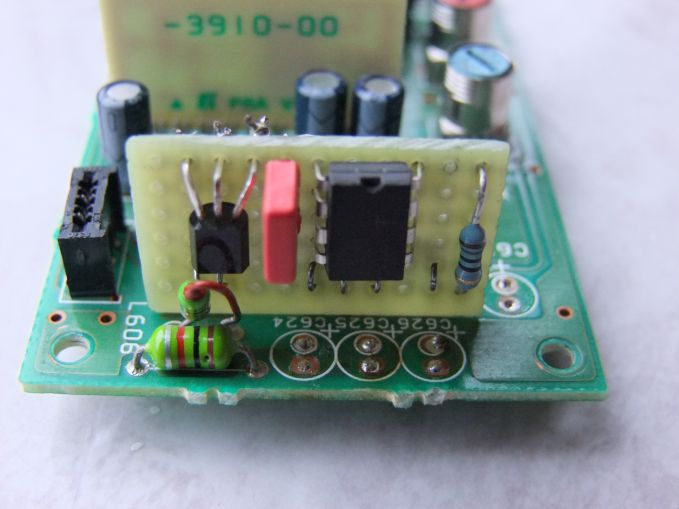
The replacement DC-DC board is mounted on the RF board.
| Replacement board mounted on the RF board
Electrolytic
capacitors C624, C625, C626, and C628 were first removed to
create workspace. The old DC-DC board was then unsoldered and
discarded.
This
picture shows how the replacement board is soldered to the RF board.
The 4 electrolytic capacitors were fitted later. C625 and C626
were replaced by 10 uF types.
Once you power up the Kenwood TS-850 the voltages indicated in the circuit diagram should be verified.
|
